Can you imagine being one of the people at Google charged with tracking trends? “Whoa! Hey Sally! Check this out … 4.6 billion people just searched ‘How to write a resignation letter.’
Okay, I made that figure up, but seriously. People are mic dropping all over the workforce. Boom. They’re out. Some aren’t even bothering with the two weeks. According to mainstream media, there are currently “8.6 million people considered out of work and nearly 10 million job openings.” (Yes, I Googled it.)
Here’s the thing. Errrybody is blaming The Great Resignation on our remote work lifestyles. And eager newsfeed writers are hopping on the bandwagon to say that we’re quitting to protest the back-to-the-office stick-in-the-muds.
Sure, some of us are. I think the remote work experiment opened a lot of eyes to the now proven fact that we are more productive when we’re not being watched. But that’s not why our businesses are seeing doors hit derrieres at an epic pace.
People don't leave companies, they leave bad bosses
Unless you’ve been working remotely from under a rock, you’ve heard this. According to studies going as far back as 2016 right up to today, people don’t quit their jobs or their companies. They quit their managers.
When leavers are interviewed by a third party (rather than in an exit interview with Human Resources) 84 percent of them say that they are not leaving the company, they are leaving their managers. Ouch.
Does that make those managers all bad people? Nooo! It simply makes them undertrained for the role of leading people. I believe in my heart of hearts that there are very few actual bad bosses out there. I also believe that there are desk chairs and desk chairs full of high-performers who got promoted to leadership roles without a lick of leadership training.
They want to engage and inspire their team members. But no one ever taught them how. That’s why I teach courageous leadership. Because there is such a deep need.
These resignations have been a long time coming
If you’re on LinkedIn, you’re seeing notifications of people moving jobs all day long, every day. You might even have a few of those well-written exit letters on your desktop right now.
You might be tempted to think, “Oh well, this is out of my control. It’s just people making different decisions about their careers because of Covid. I’ll just wait until it’s over, assess the damage, and implement a clean up plan.”
Wait. No. Just stop.
Take a hot minute to ask yourself if your organization treats leadership skills like they happen through osmosis. Like there’s a magical door that high-performers walk through when they’re promoted. On the other side, they miraculously “just know” how to attract, hire, engage, develop, and retain their people.
If your company has been letting its leaders run feral rather than cultivating and raising them like caring employers, now is not the time to let go of the handle. Now is the time to gather the people you still have and give them the care and attention they need.
It's time businesses started resigning from whining
The Great Resignation isn’t happening to us, it’s happening for us. And it’s been coming for a very long time. Covid just made it acceptable for unhappy workers to do what they were planning to do all along.
This grand exodus is a gigantic opportunity for organizations to take a closer look at how we’re preparing our managers to lead. And then give them the tools they are lacking.
Let’s stop wringing our hands and start taking action to retain the people we still have and build leaders with whom all of those highly skilled job seekers out there want to work.
5 Ways to Leverage the Great Resignation
You don’t need gimmicks, gobs of money, or a big complicated retraining reorg. What you need is to focus on some simple, everyday behaviors that start giving your leaders more of what they need—starting today.
Here’s a short list of 5 things you can start doing right now to retain the people you have and build leaders who will attract, hire, engage, and keep the best talent for you going forward.
1. Create a destination they can believe in
If nobody knows where you’re headed (or if your vision is so big it seems unrealistic) top performers are going to pull the cord and hop off your bus at the first sign of trouble. It’s not about the metrics but about how they are making a difference for customers, each other, the world.
2. Set crystal-clear expectations for everyone
Employees who don’t know where the goal line is, don’t have a prayer of getting the ball over it. Wondering how to “win” makes people nervous. Leave them alone with their nerves long enough and they will start to write resignation letters.
3. Give everyone a meaningful role
Perhaps the only thing worse than not knowing what is expected of you is knowing, and believing it doesn’t matter. So look around, make sure everyone is being challenged to their full potential and make sure they know how their work moves the organization closer to your destination.
4. Constantly coach and develop their skills
To ensure people’s jobs continue to be meaningful, everyone needs to feel like they are progressing, learning, growing. Constantly. In-the-moment coaching is one of the most important tools a leader can use to build performance and retain talent.
5. Celebrate the successes publicly
There are few greater feelings in the world than having someone notice, of their own accord, how hard you worked to achieve a goal. So take time to celebrate successes. Do it genuinely and publicly and watch the momentum build.
Imagine having managers, bosses, leaders across your organization who know how to set a realistic goal and deftly guide their people toward it, giving everyone a chance to learn and grow along the way. That’s how you attract and keep top performers engaged in working for your managers, rather than McGreatBoss across the street.

At the Courageous Leadership Institute, we leverage our work with over 300,000 leaders and employees from 400+ companies to offer leadership programs that impact results with customers and employees immediately.
Cindy Solomon is CEO of the Courageous Leadership Institute, a thriving global leadership training and research organization with access to up-to-the-minute insights on how today’s most innovative corporations are defining the future of business. She is also the author of two books, The Rules of Woo and The Courage Challenge Workbook.









